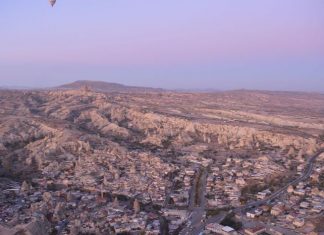The Grand State Entrance
The Porta Aurea, also known as the Golden Gate, was the official ceremonial entrance into the city of Constantinople. It was not only a military structure but also a powerful symbol of imperial strength and prestige. Its design and decoration made it one of the most impressive gates of the ancient world Guided Ephesus Tours.
Strong and Beautiful Architecture
This gate was built with large polished marble blocks, carefully fitted together without the use of cement. It had two massive towers, also made of marble, flanking the entrance. The design followed the pattern of Roman triumphal arches, such as the Arch of Severus and the Arch of Constantine in Rome.
The gate had three archways: the central arch was the largest and tallest, while the two on either side were smaller. This design created a sense of grandeur and hierarchy, showing that this was no ordinary entrance—it was for emperors and great events.
Golden Gates and Statues
As its name suggests, the gates were decorated with gold, giving the entrance a shining and majestic look. The Porta Aurea was also adorned with many statues and sculptures placed at important spots across the gate. Some of the known decorations included:
A cross, which was blown down during a hurricane in Emperor Justinian’s time
A statue of Victory, which fell in an earthquake during Michael III’s reign
A crowned female figure, symbolizing the Fortune of the City
A statue of Theodosius the Great, later destroyed in another earthquake under Emperor Leo the Isaurian
A bronze group of four elephants, an unusual and striking sight
The gilded gates of Mopsuestia, brought by Emperor Nicephorus Phocas as trophies from Cilicia
Symbols and Paintings
Above the central archway, on the side facing the city, the laureated monogram “XP” (Chi-Rho)—a symbol of Christ—was carved. The Roman eagle is still visible at the corner of one tower. Several small crosses are also carved around the gate, adding to its sacred and imperial meaning Support for Dating the Golden Gate to Theodosius the Great.
In later centuries, religious scenes were painted inside the gate’s side arches. One arch showed the Crucifixion, and the other showed the Final Judgment. These paintings reflected the Christian faith of the city and its people. Today, some faded frescoes can still be seen on the inner wall of the southern archway, suggesting that part of the gate may have even served as a chapel.
A Lost Glory
The full beauty of the Porta Aurea would have been even greater in the past. Originally, the parapets on the towers and the wall above the arches gave the gate more height and presence. Though now ruined, the remains of the Golden Gate still speak of a time when architecture, power, and faith came together at the entrance to a mighty empire.








